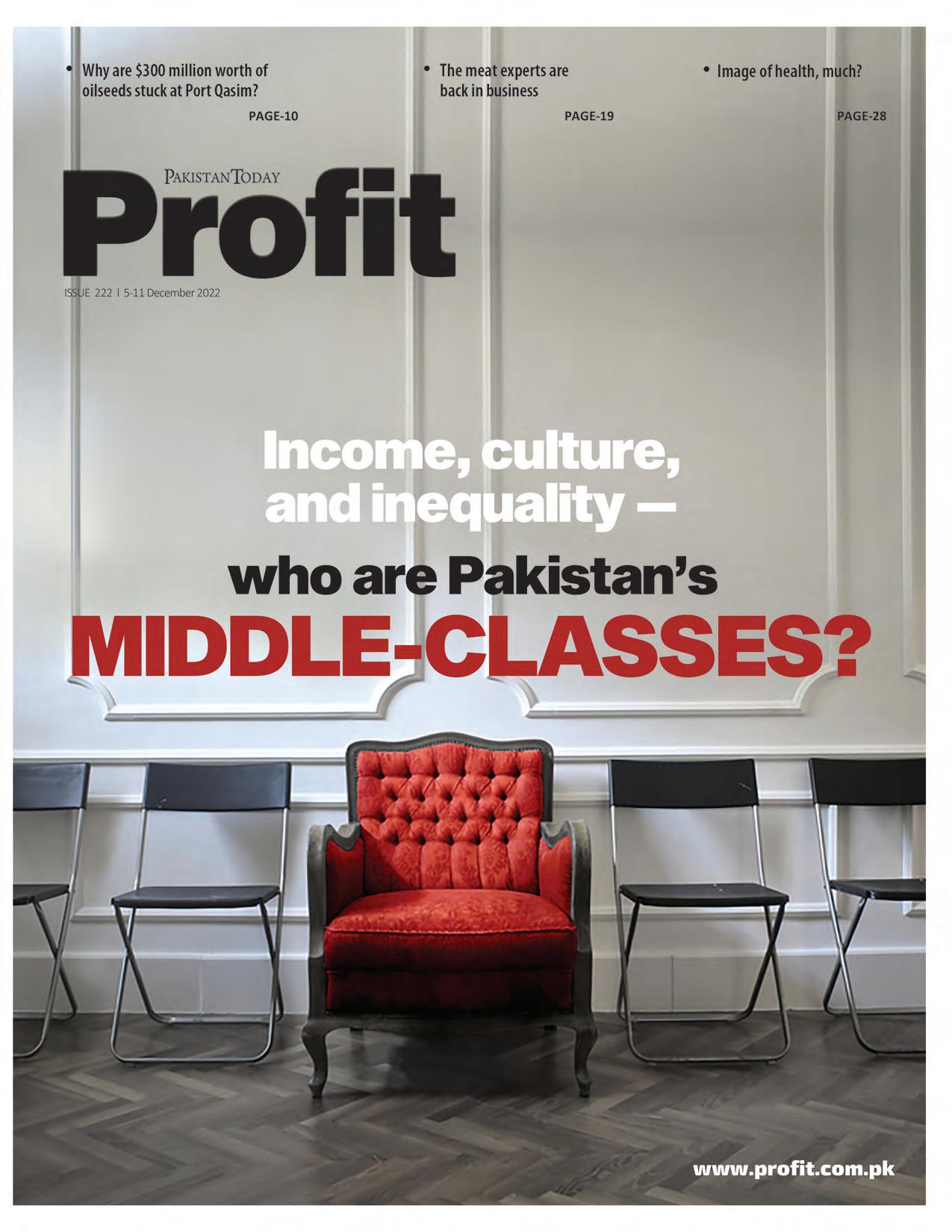
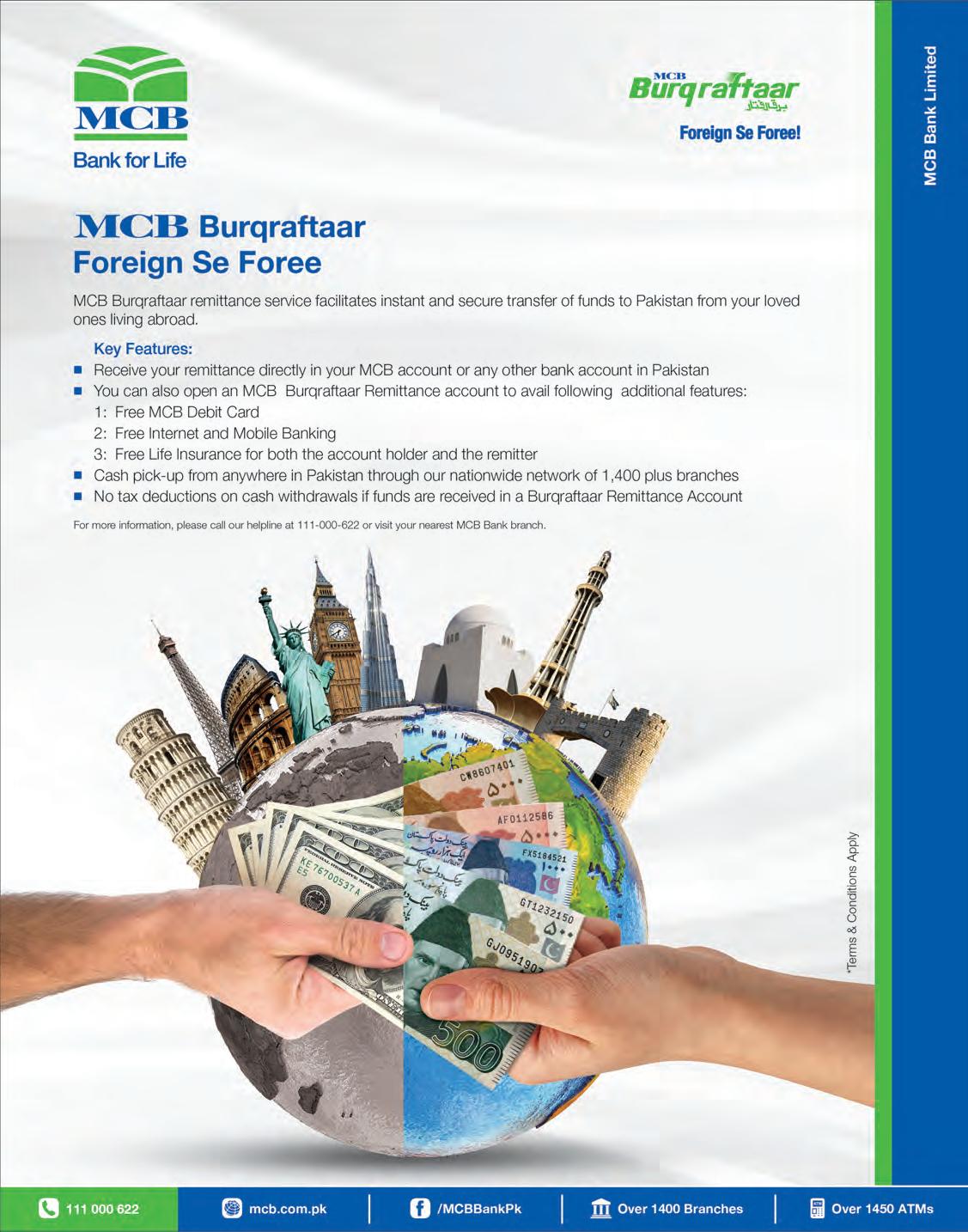
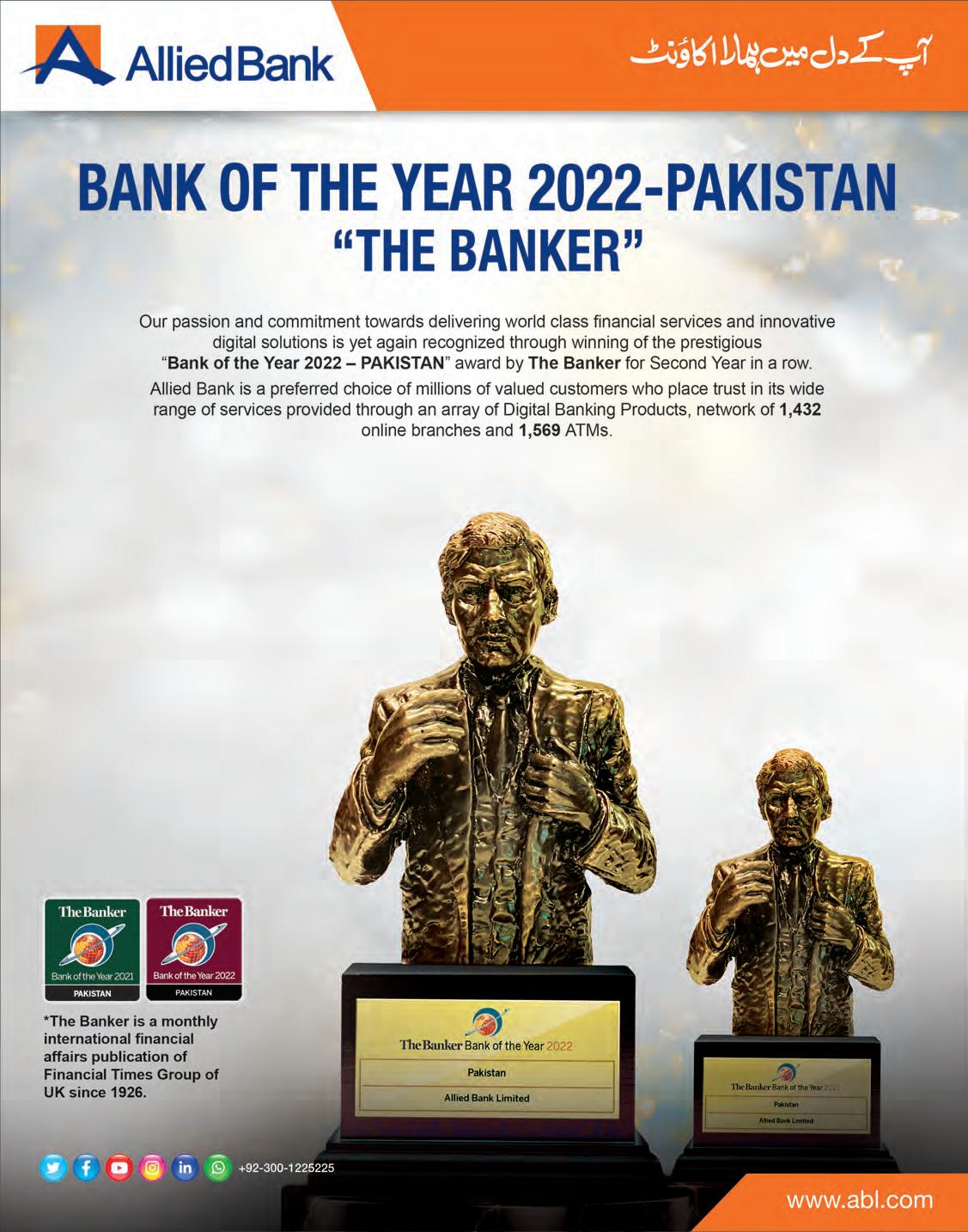
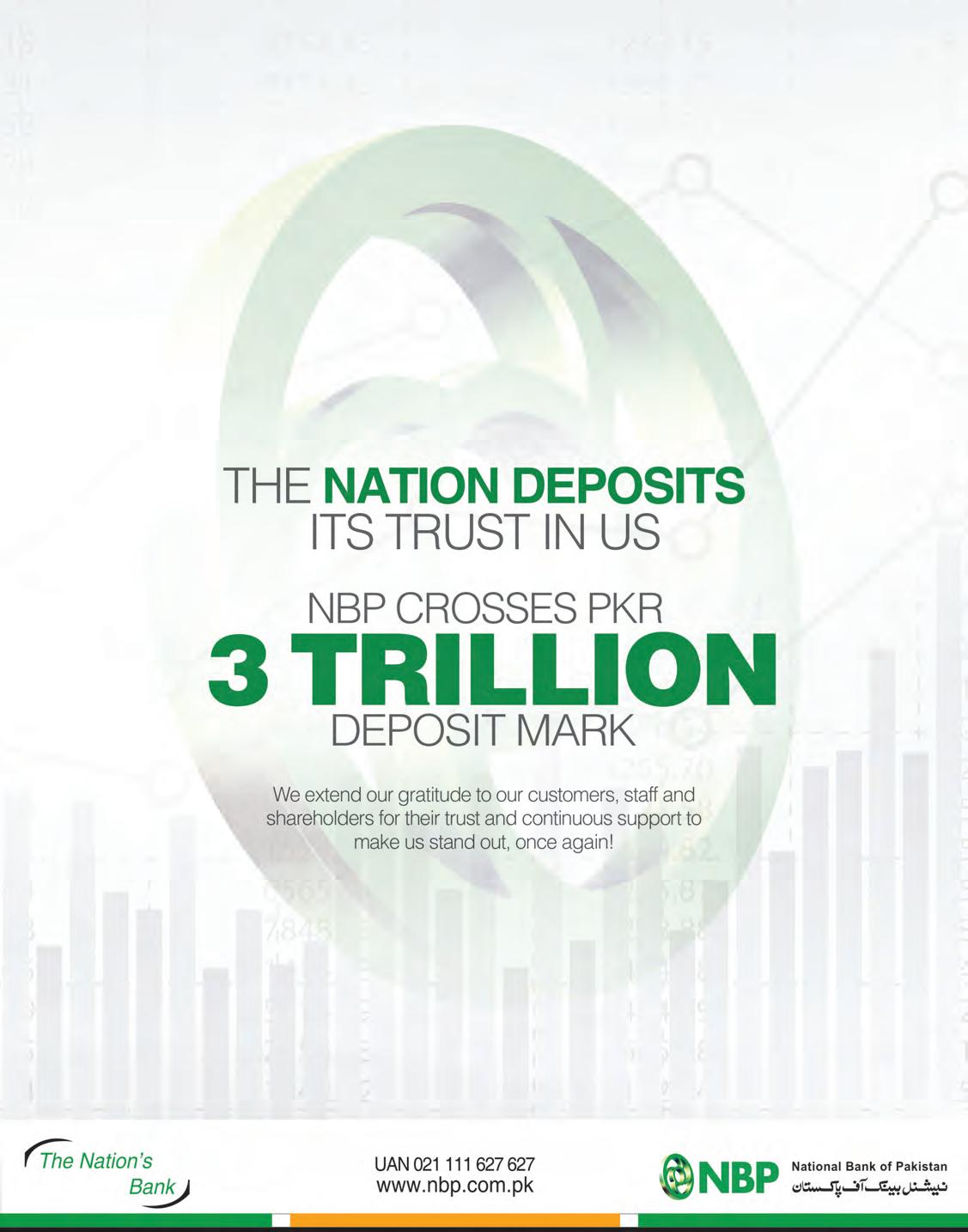



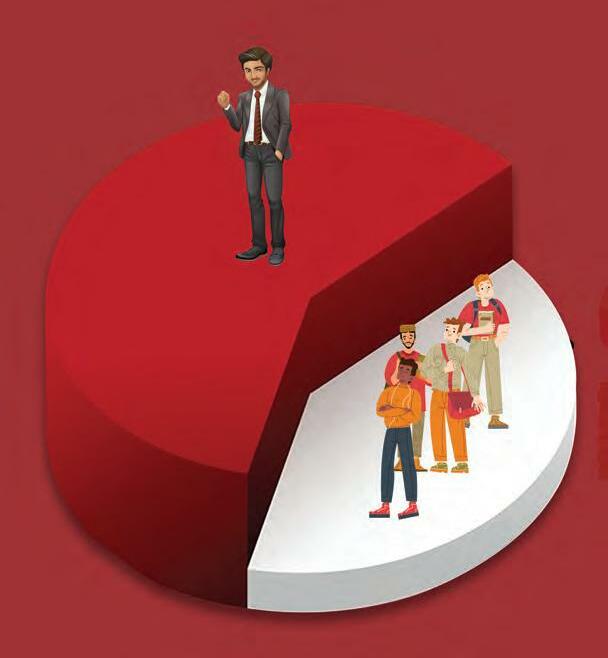
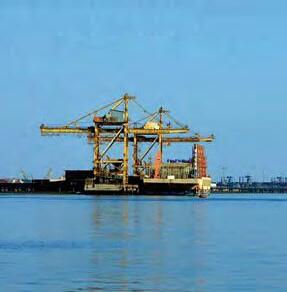
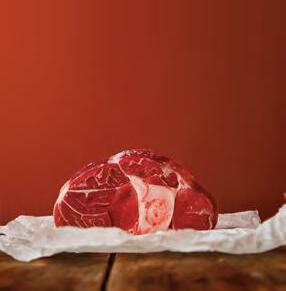

















 By Abdullah Niazi
By Abdullah Niazi
On the 20th of October this year, two ship ments were stopped at Port Qasim in Karachi. The shipments contained GMO oilseeds worth some $100 million on board. And despite the very vocal protestations of the importers that had paid for the consignments, they stayed stuck at the port pending a single certification from the ministry of climate change.
In the month and a half since the initial arrival of the first consignment, a lot has happened. More shipments of the oilseeds have arrived at Port Qasim only to be piled up with the older containers. The ensuing battle over the fate of the oilseeds has seen many different twists and turns. From a war of words that al most came to blows at a meeting of a standing committee of the national assembly to threats and warnings of soaring prices of poultry and edible oil.
The question is, what in the world is happening? Profit looks at what the oilseed shipments are, why there is so much controversy over them, how bureaucratic red-taping has unnecessarily complicated the matter, and what the effects of this delay might be on the prices of essential food commodities.
Let’s start with what is being imported. When most people hear the term oilseed, they think it is a seed that is to be sown in the ground and harvested for the production of edible oil. Oilseeds is actually a term for the seeds or ‘fruit’ that certain crops produce that are then pressed to get edible oil. One of the most widely used oilseeds globally are palm oilseeds.
In fact, palm oil is some of the most used edible oil in Pakistan and is almost entirely imported. Pakistan relies heavily on imported oilseeds to meet its caloric demands. According
to a report of the central bank, Pakistan’s palm and soybean-related imports stood at US$ 4 billion in FY21, rising by 47 percent year-onyear, compared to compound average growth of 12.3 percent in the last 20 years.
These, however, are the regular ship ments that Pakistan gets. Palm oil is actually used to make ‘vanaspati ghee’ which is the most used form of edible oil in Pakistan. How ever, the consignments that have been stuck at Port Qasim are soybeans, most of which have been imported from the United States. What is particularly unique about these oilseeds is that they are the result of Genetically Modified Organisms (GMOs). A GMO is an animal, plant, or microbe whose DNA has been altered using genetic engineering techniques. For thousands of years, humans have used breeding methods to modify organisms. Corn, cattle, and even dogs have been selectively bred over genera tions to have certain desired traits.
GMO oilseeds like the ones stuck at the port are resistant to weather and other climate disasters such as floods. They are also modified to provide higher yield, and to contain more oil per seed. Now, the important thing to understand here once again is that the oilseeds that are stuck at the port are already harvested and are simply imported to be pressed and converted into edible oil. In fact, the importers in this entire time have been represented by the All Pakistan Solvent Extractors’ Associa tion (APSEA).
However, in a rather bizarre situation, since these oilseeds are termed ‘seeds’ they require certification from the ministry of climate change. That is because the climate ministry also has jurisdiction over environmental matters, and the introduction of GMOs into any country’s natural environment can have an adverse effect on its local ecology. It is something Pakistan has seen in recent years. However, as the solvent extractors have been complaining, they only mean to extract the oil
from the oilseeds and not plant them. Which is why they claim it makes very little sense why they are not being allowed to access the consignments which they have already paid for, and for which they are now also having to pay for port charges.
In early November, a reliable source in the the Plant Protection Department (DPP) of the Ministry of Food Security and Research said the shipment had been stopped over the issuance of a certificate by the ministry of climate change.
The requirement for a certificate from the climate change ministry had been introduced four years ago, and importers had applied for the certificates back then. Because GMOs and the introduction of seeds into agriculture falls under environmental protection and is a key element of the country’s biosafety, the ministry of climate change is supposed to have oversight over such imports. However, issuance of the certificates fell prey to bureaucratic red-taping and an arrangement was made on a temporary basis to continue the import of oilseeds until the certificates could be issued. This year, however, it seems the ministry has decided to finally implement the requirement.
As time went on, more shipments joined the two original shipments that had arrived on the 20th of October. According to both the importers and industry associations, the require ment has never been implemented before, and that the application has been submitted to the ministry for more than four years. “Stopping the consignment without prior notice or intimation are posting huge losses to the import ers,” said a representative of the APSEA. “We are paying thousands of dollars as demurrages for the past 28 days. Neither the consignments are being released nor the certificate is being issued to resolve the issue”.
The acting Director General of DPP, Allah Ditta Abid, when contacted, claimed that the issuance of GMO was entirely a subject of the Ministry of Climate Change. The department only ensures fumigation of the consignment if the same is found infested. According to an official source, there was no policy framework for GMO certification by agricultural experts despite having proper rules and regulations to deal with the import of GM seeds.
As the shipments continued to languish, the confusion between the food security ministry and the ministry of climate change reached a crescendo near the end of November. At least six vessels containing valuable oilseeds important for Pakistan’s food security continue to be stuck at Port Qasim amid ambiguity and confusion.


It turns out the issue was created after a letter of Customs sent to the Minis try of National Food Security and Research (MoNFS&R) indicating that the imported oilseeds are genetically modified organisms
(GMOs) to be cleared after due certification.
An official at the Ministry of Climate Change, however, claimed that his ministry has the mandate and due process of inspecting the GMO products. Meanwhile, through a letter to MoFS&R the association has also requested for an urgent meeting to discuss this extremely crucial issue.
This meeting is where things got messy. On the 30th of November, the disagreement between the food and climate ministries took an ugly turn at a session of the national assembly’s standing committee for food security.
The meeting of the standing committee started off on the wrong foot after the minister for food security, Tariq Bashir Cheema, walked into the meeting where oilseed importers were also present. The minister took exception to
this, saying that representatives of soybean importers were not welcome at a meeting of a parliamentary committee.
To this, the importers responded harshly telling Mr Cheema to leave if he was so opposed to their presence. Tempers flared and Mr Cheema lashed out at committee chair MNA Rao Ajmal, saying “It seems that the chairman of the committee has also become an advocate of soyabean importers”.
“I am going to adjourn the committee session if Mr. Cheeman doesn’t take back his words,” he warned. “I am not advocating for anyone. The poultry industry has been on the verge of destruction, and 10 of my 12 farms have closed down yet I haven’t used my position to try and influence anything. Why would I be doing this now?”
This is where things get interesting. You see, the impact of the oilseed consignment being stuck at Port Qasim is not limited to just edible oil. While oilseeds are primarily used to extract edible oil, once the oil is extracted the residue of oilseed known as oilseed cake is used as fod der for cattle and poultry. The solvent industry produces edible oil and its residue, the oilseed cake, goes into feed production for livestock.
Soybean is one of the most productive forms of oilseed cakes used as fodder for livestock. With as much as 300,000 tons stuck at Port Qasim, there may be a larger significance of this stoppage on some of the most basic food commodities in the country.
A statement from the Hyderabad Chamber of Commerce and Industry (HCCI) Presi dent Adeel Ahmed Siddiqui during this entire saga actually warned that the government’s reluctance to allow clearance of imported soy bean oilseed at the port may trigger shortage and price hike of edible oil, chicken and milk prices. n

It begins with a fetishisation of meritocracy. Ask a person for their background and they will delve into an origin story. For a select few, that origin story will be steeped in privilege. There will be tales of land-owning great-grandfathers and enterprising grandfathers that used the wealth from that land to set-up industries.

But for many others, the story will be very different. They will involve recollections of difficult times, of working-class struggle, and of upward social mobility grounded in hard-work and ability. For a few of the peo ple telling these stories, it will be true. And for a lot more, they will be an exaggeration.
Most people have a strange relationship with their
own privilege. The only time someone is happily inclined towards accepting the advantages that their birth afford ed them is because the privilege comes with a sense of grandiosity. But for most people that grew up upper and upper-middle class, acknowledging their status is a hard pill to swallow. The average person that gets an education, gets a degree, and builds a career by working their way up in a profession like to think that they got theirs as a result of their hard work and because they deserved it.
The reality is rarely so simple.
A 2013 study published in the American Sociological Review found what it christened the ‘’grandparents effect’ — a phenomenon that showed that a child would be two and a half times more likely to find themselves in a professional-managerial role if just one of their grandparents had held a similar job in their career. Similarly, a report published in The Guardian last year based on a survey
of nearly 200 professionals found that people “”tend to downplay their own fairly privileged upbringings and instead frame their lives as upwards struggle against the odds deflecting attention away from the structural privileges these individuals enjoy.”
Why would people shy away from their backgrounds? Largely because they want to portray the outcome of their lives as “more worthy, more deserving and more meritorious”. It is a natural if lopsided desire, and one that can be seen quite clearly in Pakistan, where the term ‘middle-class upbringing’ is thrown around casually and with great confidence. This, of course, gives rise to the question, what does ‘middle-class’ mean in Pakistan?
There are more than a few ways to answer that question, and depending on who you ask the conclusion you reach will be different too. Declared annual incomes, for example, can give a fairly good picture of how the populace of Pakistan can be classified according to their incomes. But then there are also certain global measures of class that come into the picture. Besides, is the picture painted solely by incomes a good metric of classifying people? And who defines what those income levels are? It is worth taking a closer look at what the term ‘middle-class’ means in Pakistan in conversation and in numbers. And there isn’t a better point to begin talking about it than with the term itself.
In terms of wealth and income, one would think that figuring out where ‘middle-class’ falls would simply be a question of calculating the middle point between the richest and poorest person in a country. Except this is not how it works anywhere. Ac cording to different economists, determining what ‘class’ a person belongs to can be based on income, wealth, consumption, demograph ics, and even aspirations.
That is because the concept of ‘class’ itself is a confusing one. According to Dr. Durr-
e-Nayab of the Pakistan Institute for Devel opmental Economics (PIDE), “the concept of class can be traced back to Karl Marx with his classification based on the relationship to the means of production.”. What that means is that someone’s class is judged better in terms of their relation with the means to produce wealth. Do they own or control the means? These are the CEOs, Landlords, and people in power. Are they the labor for the means? These are the lower classes. Or are they at the intersection of the two mentioned above, namely the different types of middle class.
You could be earning Rs. 50,000 as a 16th grade government officer in a ministry, and your social connections and access to power alone would be enough to take you out of the middle class. Meanwhile, the same 50,000 will never render a similar privilege to, say, a self-employed electrician. And that is where the complexity lies in many ways, what determines your class? Is it cash, credentials, or culture?
Figuring out class is a complex exercise. The idea of using income alone, to classify people, doesn’t always go hand in hand with other measures of wellness like wealth, asset ownership, type of employment and all the other social denominators.
And in Pakistan, it is even murkier than usual. Even if we simply decided to take income as a measure to ascertain the middle class, there is the problem that the richest in any part of the world have far too much income (hidden or declared) to be put on a homo geneous, unskewed normal distribution of incomes. Simply put, the rich might be richer than they proclaim (duh!) and the seemingly poor might not exactly be the posterchilds of transparency.
Whenever there is a conversa tion regarding class, it often dissolves into vague claims about what car a person
drives, where they live, and where they went to school. While these are indicators of where you stand financially, they are not all-en compassing answers. People with solidly middle-class incomes may have assets that increase in value over time. They may, for example, sell some part of a small inheritance to pay for their child to go to a big university or for their wedding. The existence of assets skews the data terribly, which is why determining a person’s membership of the ‘middle-class’ is difficult.
For the time being, and to simplify our search for the Pakistani middle-class, let us go the simplest possible route and look at what the middle-class would look like based entirely on income. Essentially, more than figuring out the ‘middle-class’ this will give us an idea of what Pakistan’s middle-income group looks like.
The world bank states that a person earning between $10 to $40 in a day is “middle class” in a lower-middle income country like Pakistan. This adds up to about $300$1200 a month. As per today’s exchange rate, that value is somewhere between Rs. 65,000 to 266,000. When June 2019 started, the same world bank definition meant an income range of Rs. 44,000-176,000.
(Note: We use the exchange rates from June 2019, because that is when the calcu lations of the HIES survey were made. This sets June 2019 as the vantage point/base year and also surpasses any disparity caused by exchange rate volatility in the recent times)
But that World Bank definition doesn’t at all reconcile with the distribution as por trayed by the Pakistan Bureau of Statistics. According to the Household Integrated Eco nomic Survey (HIES) 2018-19, by the Pakistan Bureau of Statistics, the average household income, by June 2019, was Rs. 41,545. This is the total income of Mr. X’s house, a mere 41,000, provided that the number of people living in that house is 6 or 7 (Average house hold size is 6.24). Interestingly, the same data states that the average household incomes

of the 5th and 4th quintile as Rs. 63,544 and Rs. 37,533 respectively. That means that the richest 20% earn only Rs. 63,544 and the next 20% after them earn Rs. 37,533, on average.

What does this mean for Mr. X? This means that Mr. X is actually among the top 30% of Pakistanis with respect to income. Then how is Mr. X “middle” class? If the world bank definition is to be considered true, then the majority of the richest 20% of Pakistan is actually “middle” class. Essential ly, the question here is whether a person is middle-class relative to the rest of Pakistan’s population or on a more defined global scale.
Then there is also the issue of the PBS data, which comes into question. Like every other home-cooked thing in Islamabad, the PBS data should be taken with a pinch of salt. “The income data collected by the Pakistan Bureau of Statistics, is largely under-report ed due to the very nature of the survey data
Dr Umair Javed, assistant professor at LUMScollection”, says Dr Umair Javed, assistant professor at LUMS. Shockingly, it turns out that a lot of people, mostly in the highest quantile, when asked about how much they earn, don’t give the right answers. Dr Javed tells Profit that there is a consensus amongst the people who work with the income data that it is understated. The degree of this un derstatement can range from 30%, to as much as 100% for the upper quantiles. And the fact that we do not have reliable tax data, doesn’t help either.
So does that mean that we should resort to the definition set by the World Bank? We can, but in this case it is important to realize something. The World Bank blankets the Middle Income countries’ middle class under one group. A country with a gross national income (GNI) of $1200 has the same defini tion of middle class as a country with GNI of $3600. So while the lower bound for the
middle class ,Rs. 44,000, may be relevant in Pakistan,the upper bound of Rs. 176,000 would be more relevant for a comparatively richer developing country, say Columbia or Turkey.
A former economist at the Planning Commission and a development sector expert, Dr. Muhammad Saleem told Profit that, these benchmarks are looked at better, in respect to the defined poverty line. As of 2018, 21.9% of Pakistan’s population is below the poverty line, according to the World Bank. This means that while a large number of Pakistanis are above the poverty line, the classification of their income is not happening amidst the incomes of 100% of the population, but among the 78%, who are at least earning a (questionable) living wage. This makes the pool of incomes narrower and is yet another way to consider the PBS data understated.
Meanwhile, columnist and Director of The Pakistan Initiative at the Atlantic Council’s South Asia Center, Uzair Younis, in a recent tweet also looked at income as a measure of figuring out what constitutes middle class income in Pakistan. “According to the 2018-19 HIES, the average income of a household in the top 20% was PKR 63,544 per month. The middle class (3rd quintile) makes PKR 31,373,” he says.


The educated, urban segment does not want to associate itself with the exploitative elite. Because, in an unequal society like Pakistan, people who are aware of the inequality, don’t want to be perceived as the reason for that. The landed elite is however different from this, they take pride in being the flag bearers of inequality
One can argue that HIES data is off, and it probably is. But even if we double the third quintile’s income, we are looking at an income of ~65,000 a month for a middle class household and ~130,000 for a top 20% household.
 Younis, director of the Pakistan Initiative at the Atlantic Council’s South Asia Center
Younis, director of the Pakistan Initiative at the Atlantic Council’s South Asia Center
“One can argue that HIES data is off, and it probably is. But even if we double the third quintile’s income, we are looking at an income of ~65,000 a month for a middle class household and ~130,000 for a top 20% household. Now folks can judge themselves on where they stand.”
So if we consider the benchmark by the world bank and the PBS data together, the entirety of the first quintile is below the poverty line. In the remaining 80% people, We land at an estimated figure between Rs. 33,000-52,000 that can be reasonably deemed to be at the middle (Give or take Rs. 8,000 to account for some of the disparity in data and average deviation between the quintiles). If the PBS data is taken at the face value, the majority of the middle 40% of Pakistan (except the ones below the poverty line) will lie

between the said income level. Bear in mind that this estimate is for the middle of 2019. But this is where it gets even trickier. What we just defined isn’t essentially a class, a better term for that could be “middle income group” as suggested by Dr. Javed. What, then, is class?
friends define as much of their socio-econom ic class as their income does.
It is a food chain of superiority in which income is the most important, yet not the only deciding factor. Having said that, some one higher up in the top quintile of income or simply the top 5-10% is in no way, or form defined as middle class. Even if they lack privilege, it is more of a conscious choice. By the virtue of their wealth, they would not be denied access to most of the aforementioned variables.
t could be about something as little as your taste in music and your consumption preferences”, says Dr. Umair Javed on how to define classes. Subconsciously, everyone realizes that their access, their lifestyle, and their
Another thing that tempers with our understanding of the middle class is not considering wellness, quality of life and wealth statistics. These variables drastically change our definitions of class and prestige, especially across rural and urban areas. Ownership of assets, oftentimes, does not translate into income. The infrastructural development in your dwelling also plays a huge role in the quality of your life. Even the difference in the incomes of the middle income groups, in both the rural and urban areas are statistically sig nificant. “Developed countries, like the UK, have designed a much more efficient system that takes occupation into account when classifying people,’’ shared Dr. Javed.

“Good income has nothing to do with class”
Now folks can judge themselves on where they standUzair
he educated, urban segment does not want to associate itself with the exploitative elite. Because, in an unequal society like Pakistan, people who are aware of the inequali ty, don’t want to be perceived as the reason for that. The landed elite is however different from this, they take pride in being the flag bearers of inequality”, says Dr Javed. And this point goes to the heart of the issue, and back to where we began this story from.
A fetishisation of meritocracy. There are two kinds of people in upper-income groups. There are those with the ‘Chauhdry’ fascination. Who either are or want to appear a part of the landed gentry — families that take pride in being industrialists and zamindars for generations. Along with it comes a sense of history, of grandiosity, of belonging. There can be no greater stake than owning land.
And then there are the other kinds. People that have been socially mobile in the recent past. Whose parents, grandparents, or great-grandparents became a part of the upper classes by joining the managerial workforce. A few generations down the line, even though they are born and brought up in solidly up per-class circles and circumstances, they like to portray their lives as a rise through difficult circumstances based on their natural abilities and hardwork.
And in many ways, it is a relative ques tion. A Lahori schoolboy from Beacon House, for example, who travels in a Corolla may look at his contemporaries from Aitchison College riding horses and driving around in Land Cruisers and feel that they are middle-class in comparison. However, perception alone does not make reality.
Educated or not, acquiring more wealth and aspiring to have a constantly better life style is most people’s psychological orientation. How do we then get to “cancel” someone on twitter because they called themselves middle class? To solve this pressing issue, here are a few rules of thumb to check if you are as poor/rich as you think you are. If the average income in your household of 6 was above 70,000 in 2019, you were most likely in the top 15-20% of Pakistan. If you have made an unsponsored trip to the US, at any point in your life, you are not middle income or middle class. If your family has had ownership of a house in any reasonable urban dwelling, there is a high chance that you are not a middle income family. If you have good or even reasonable connections in the government/ police/ military etc, you are not middle class. n
These benchmarks are looked at better, in respect t o the defined poverty line. As of 2018, 21.9% of Pakistan’s population is below the poverty line, according to the World Bank. This means that while a large number of Pakistanis are above the poverty line, the classification of their income is not happening amidst the incomes of 100% of the population, but among the 78%, who are at least earning a living wage
 Dr Muhammad Saleem, development sector expert
Dr Muhammad Saleem, development sector expert

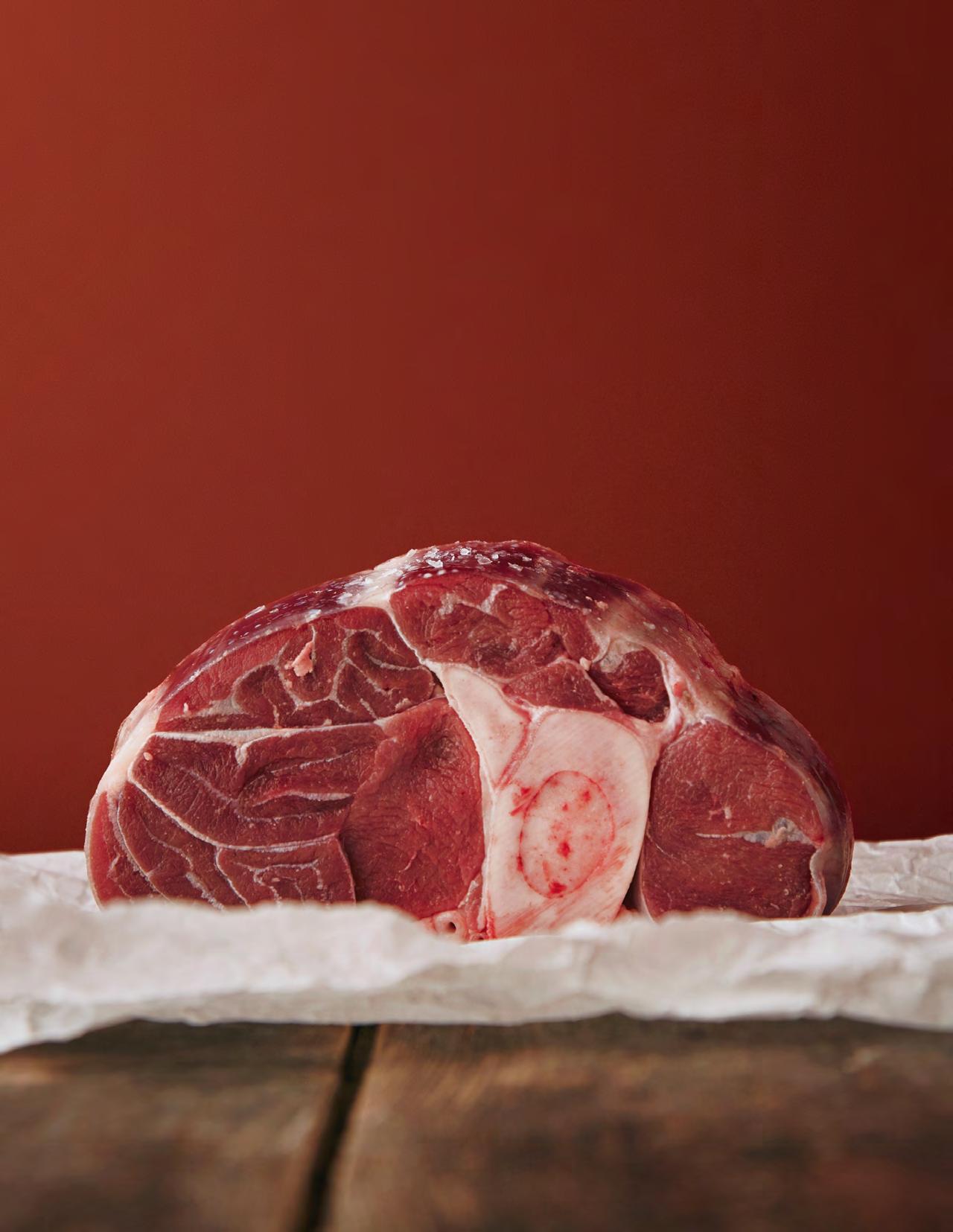
Despite recent liquidity issues and a tough economic environment, Al Shaheer is looking forward to a highly profitable year
By Muhammad Raafay KhanAfter the remarkable success of its MeatOne brand, Al Shaheer Cor poration (Ltd) has launched its latest brand ChefOne and entered the frozen foods market. Just take a look at the MeatOne website and you will see a tantalising array of product offerings on display from mutton and beef cuts to oceanic Spanish Mackarel, Red Snapper, and Baby Backti (we’re not quite sure what this is but it looks pretty good!). Al-Shaheer was founded over a decade ago with the aim to export high quality halal meat to the world. Over the years, it has become one of the leading exporters of meat from Pakistan, and one of the fastest growing food businesses in the country. In spite of some losses and recent liquidity problems, the story of Al Shaheer is a story of persistence to become the best quality meat provider which is fresh, hygienic, and Shariah-compliant. With the intent to raise over Rs 700 million in cash through a rights issue in the next few months, Al Shaheer is fully com mitted to a huge expansion that won’t just provide huge returns in the coming year but may also just make it the leading meat exporter in Pakistan.
Al Shaheer Corporation (PSX: ASC) was formed in 2008 as a meat business to cater to the local and global halal meat industry. It is one of the leading meat exporters in Pakistan. Its primary export markets include Middle Eastern countries such as Saudi Arabia, Dubai, Kuwait, Oman, Bahrain and Qatar. The company claims that its meat processing facility in Karachi is the largest pri vate facility in the country.
Al Shaheer launched MeatOne as its first retail brand in 2010 to provide a one stop fresh meat solution to its customers. It tries to be meticulous in every step of the meat process. Starting with a carefully designed meat selection process to choose the highest quality of cattle with the help of skilled vets, the animals are sent to the company’s abattoir (fancy name for slaughterhouse) in Karachi to be slaughtered in a completely ‘halal’ way.
Transporting the meat to the retail outlets is a tricky business because the quality of meat has to be preserved. One of the modern ways to do this is by flash-freezing the meat, which is a way of freezing the item quickly with cold circulating air. While Profit was unable to ask the company directly about this process, an unnamed industry insider told us that flash freezing is a common method used today which makes the frozen food rock solid. This process keeps the food in the best condition possible
before it is made ready for transport.
In 2014, Al Shaheer launched its second retail brand ‘Khaas Meat’ as an affordable, hygienic, and high quality alternative to the neighbourhood butcher shops. A section of Khaas Meat was also opened in 2015 in major superstores across Pakistan. In the same year, the company decided to go public and list itself on the Pakistan Stock Exchange (PSX).
At the time of its IPO in 2015, Al Shaheer was oversubscribed at a strike price of Rs 95 against a floor price of Rs 43. Such a high strike price relative to floor price usually means that the stock price will decline after the IPO. Currently, the stock is trading at around Rs 11 per share. In early 2017, Al Shaheer Corporation changed its name to Al Shaheer Foods to establish itself as a ‘foods’ company. Now it also offers frozen foods, vegetables, fruits, salads, and ready-to-cook and ready-to-eat products.
Most recently in 2022, the company has launched its newest brand of ‘ChefOne’ which is now available in the leading stores of Pakistan. It provides frozen food products like poultry, meat, and fish, and so on. One of the distinguishing features of the MeatOne and ChefOne brands is the high variety of product offerings and the numerous different cuts of meats. Additionally, the company also started commercial production of frozen chicken at its Lahore plant during the year. Al Shaheer has a number of business channels including export, retail, delivery and ecommerce, and a professional line.
Al Shaheer has one of the highest free floats on the PSX with 75% of its shares freely available for trading. A high free float suggests that the spon sors of the company are open to bigger expansions and are not afraid of sharing the ownership of the company with multiple investors. The single majority shareholder of the company is the founder and CEO Mr Kamran Khalili who currently owns 72,585,447 shares or 24.20% shareholding.
However, as in any business, liquidity is very important for expansion and meeting working capital requirements. Al Shaheer too has had to deal with the issue which is why the company had to issue right shares three times in the past three years.
Al Shaheer issued 40.7% rights shares in December 2019 and another 50% in December 2020. This raised the paid-up capital of the com pany to 2,999,389,000 from the total authorised share capital of 3 billion. This meant that if Al Shaheer was to raise any more cash with the rights issue again, it would have to increase its total authorised capital. And this has happened now. As of November 28, 2022, the board of di rectors of ASC have decided to increase the total authorised share capital of the company from Rs 3 billion to Rs 4 billion. This was followed by a declaration of another rights issue of 25% from the paid-up capital of the company. When the
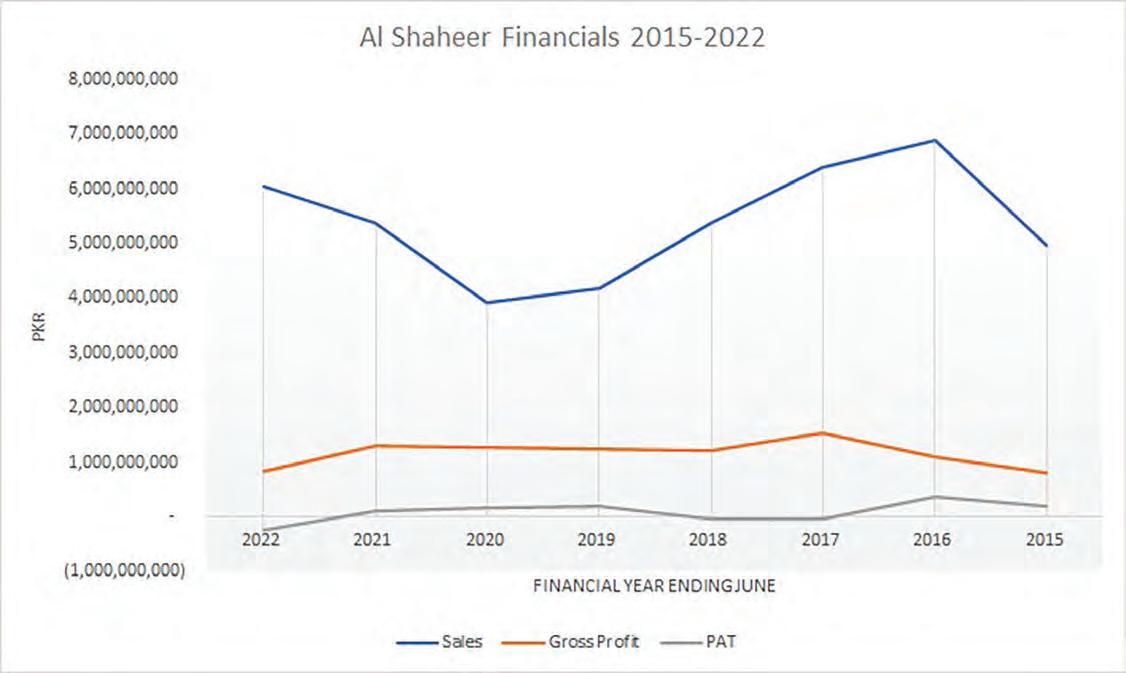
entitlement of shares is decided later this year, the company’s total paid-up capital is expected to increase to approximately 3,749,236,070 from a total authorised share capital of 4 billion.


According to its notice to PSX, ASC needed to issue these new shares to invest further in its poultry plant and food processing facility in Lahore and meet its working capital requirements. The company expects the rights issue to help increase the revenues and profitability of the business and provide higher returns to the shareholders. The rights issue is expected to bring in almost Rs 750 million in cash to the company.
The company had a challenging year in terms of profitability as it posted a loss of Rs 238 million, the first loss after three consecutive profitable years. Nevertheless, the topline posted an year ly growth of 12.6% but it was not the highest turnover in its history. Higher cost of sales in the year also resulted in a decreasing gross profit margin of 13.7% from 24.5% a year before.
As the chairman Mr Qaysar Alam notes in the company’s annual report for the year 2022, “During the year, economic and inflation crises were the key factors which adversely affected our margins; our volumes and margins faced immense pressure from the pricing strat egies of local and international businesses in export market. As a result, the Company was unable to pass on all its costs to the consumers.
These business pressures also coincided with the completion period of the new poultry and processed food project.”
It can be seen from the financial per formance of Al Shaheer that its gross and net profits have remained relatively stable despite the ups and downs in the annual turnover of the company. The margins in the meat industry have continued to pose a problem for Al Shaheer since its inception but given its persistence and continuous expansion plans, a suitable economic environment can ensure that Al Shaheer is able to earn higher margins in the future.
But while the latest annual figures of the company might not be so rosy, the recent quarterly results certainly are. For the first time in four quarters, Al Shaheer has posted a profit of Rs 136 million. According to the quarterly report, the company credits this to the increase in revenue generated from the new frozen food business and also due to the strong growth in its institutional sales business.
According to a recent report published by Salaam Gateway, a Dubai-based news and insights platform on the global Islamic economy, the global halal food and beverage industry is valued at $415 billion. The
top 10 biggest exporters of halal meat had a total trade value of $14.04 billion. The top three halal meat exporting countries are all non-Muslim majority like Brazil, Australia, and India. Pakistan ranks 19th as the biggest meat exporter in the world with exports of over $400 million.
In 2021, Al Shaheer Foods was one of only 10 local meat producers selected to export meat to Egypt. In September 2022, Al Shaheer signed a business agreement with McDonalds Pakistan and became the first local company to supply beef products to the fast-food giant.
Even though Profit was unable to get in touch with Al Shaheer, despite several attempts at reaching out to them, the recent quarterly results have shown that the compa ny is well positioned to become the profitable company that it has always envisioned for itself. If we consider the recent devaluation of the Pakistani rupee this year, we can expect it to help Al-Shaheer in achieving an even higher export sales figure in its current financial year.
According to the recent director’s report about the future outlook of the company, Al Shaheer is planning to expand its poultry and processed food business into HORECA and institutional sales in addition to the retail market. The company expects significant topline growth, exports growth, and institu tional sales growth due to normalisation of market conditions. n



This week, Profit’s cover story chronicles not just the metrics that can be used to figure out what income group constitutes ‘middle-class’ in Pakistan, but also what it means to be and feel like you belong to the middle-class. It is, after all, a complex equation. There might be many people that are socially mobile, or who inherited money late in life but grew up with very familiar middle-class experiences. Understanding the issue on a spectrum is important, but one element that may help us understand the phenomena a little better is black forest cake.
It is entirely likely that you may remember this once highly sought after dessert from a decade ago or longer. Recently, it made a bit of a wave when back in October former prime minister Imran Khan celebrated his birthday by cutting into a rather unappetising black forest cake. After the video became public, it raised questions for a lot of people about the simplicity of Khan and how he was celebrating a milestone birthday (his 70th) with a solidly middle-class cake.
Except that is where the problem comes in. Back when ‘black forest’ cakes (called that for the dense chocolate shavings that give it its signature look) first became a thing in Pakistani bakeries, it was quite in vogue. In fact, for a few years, it was even a fashionable cake to serve at birthday parties and per slice at restaurants. However over the years it has been demoted. As the word ganache has become more familiar and red velvet and Lotus have taken precedence, the Black Forest cake has been relegated not to the ‘fresh cream’ version of ‘badamon wala cake’ status.
“People don’t really ask for black forest anymore. They are not
difficult to prepare, however as with all cakes with fruits they do have a shorter shelf life so bakeries don’t have as much incentive to make them as well,” says ‘Patissier Bilal Khan’ by Petit Four.
Meanwhile Shanza Shah, founder of Flapjack Co, says that the market has been evolving over the years. “Some body will add ganache or chopped cherries or jam depending on who they are in the mood for. So the cake is trying to stand out in the market because there is a lot of competition in the market, both for the up-scale market and for classic black forest cake.”
“Nostalgia plays an important role in food. Depending on the mood or the season it will remind you of things and senses, time, season, the gathering that you are in — all of this plays a huge role in food cravings. As far as the middle-class nature of the cake goes, I don’t think this is the case. What is middle-class about cherries, or chocolate? I suppose because it is readily available and we are more familiar with it, it is more common but not middle-class at all.” she adds.
And that is what gives rise to this piece. This once popular dessert went through a transition. It began being made by the likes of Masooms and Kitchen Cuisine before being picked up by Shezan and Gourmet, and eventually by little neighbourhood bakeries as well. While high-end black forest cakes can still be found very easily, this is a cake that is more likely to have cheaper versions at every corner bakery as compared to say a lotus cake or a red velvet cake.
It was a surprise to us, thus, when after Imran Khan’s cake made the rounds on social media that there wasn’t a lot of marketing effort put into trying to sell more black forest cakes off the back of this nostalgia. After all, nostal gia marketing is a very real thing.
The writer is a business journalist at Profit. She can be reached at ariba. shahid@pakistantoday. com.pk or at twitter. com/AribaShahid
So what can we learn from this? Lately, there has been a trend when it comes to cakes. A number of bakeries around town have the same-looking cakes and roughly the same menu. You can find a milky malt cake, three milk cakes, rocher cakes, Nutella cakes, mousse cakes, and German fudge cakes. Sometimes some bakeries shake it up and add a cheesecake or a red velvet cake.
However, the chances of you finding a black forest cake or the pineapple cake you grew up eating on every birthday aren’t as common as before, especially at newer establishments. Maybe you will find them at your mohalla bakeries and some old-school bakeries that cater to people who enjoy sweet, creamy desserts that don’t just taste like chocolate.

The Black Forest cake and the Pine apple Cream cake have been staples at birthdays for everyone until the last decade. Dating back to the 16th century the cake originates from the Black Forest Region or Schwarzwald, in Germany; invented by Josef Keller a pastry chef at Café Ahrend. This was when chocolate and cake found themselves in melodious harmony for the first time, in fact, this is when chocolate was spreading slowly across Europe. The cake was made with cherry brandy, cherries, cream, and chocolate. Yum.
The Black Forest cake sponges are not soaked in brandy (or so we think), instead they use citrus juice to moisten the sponge cake base. Since cherries are not as easily available all year round, Pakistani bakers add canned fruits like pineapple and cherries between the two sponge layers covered in cream.
The popularity of these cakes went down as newer chocolate cakes took centre stage. This is primarily because bakeries found it easier to make and store chocolate cakes com pared to black forest cakes. Chocolate cakes generally do not melt as fast as cream cakes; nor do they require certain kitchen conditions for them to be made. You, however, cannot just whip up heavy cream in a hot kitchen. One mistake and the cream goes flat, and it's wasted.
This made bakers happily move towards other options. Secondly, because the cakes are drenched in citrus or fruit juices they tend to go sour faster if not stored right, or left in the fridge for too long. A reason why they are drenched is that they are made using sponge cakes. Sponge cakes are generally harder to bake than regular cake bases. This is because you need to whip the egg whites and yolks separately, be very gentle with the mixing and ensure it bakes evenly. Baking the sponge is a time taking process and takes longer than a
regular gooey chocolate base. The sponge is also very dry on its own and needs to be drenched in milk or some syrup to make it moist.
With a former PM eating a no-longer raved-about Black Forest cake, rather hungrily, on his birthday should have encouraged bakeries to rekindle demand. This is especially true for bakeries that continue to make the cake.
It is a shame that no advertising agency thought to jump on the nostalgia marketing bandwagon. For those of you who don’t know, nostalgia marketing is a strategy used where brands tap into positive and familiar concepts from previous decades. This method appeals to consumers and builds trust for new ideas; or rekindles a spark of demand for existing yet not as-popular as before goods and services. n


Let me start with a question. What does the first article of the Constitution say? Is it about Islam, democracy or fundamental rights? It is about none of the foregoing. It is about federalism. In a country where everyone is speaking about the constitution, it is amusing how little we actually know about it.
The Constitution of Pakistan begins with the ringing words, “Pakistan shall be a Federal Republic…” Out of the 280 odd articles of the Constitution, a sizable number is devoted to charting out a scheme of division of powers between the various tiers of our federation. Yet very few of the exponents of the Con stitution, the superior judiciary especially, have made an effort to give meaning to the constitutional vision of a decentralised federal state.
A recent example of the short shrift given to federalism, especially its fiscal aspects, is the imposition of federal income tax on “deemed rental income”. Finance Act, 2022 made a clever little insertion - Section 7E - into the Income Tax Ordinance, 2001. After this insertion, every property owner having property above a certain threshold is required to pay the Federal Government an annual tax equivalent to roughly 1% of the market value of his or her property. Your property might as well be a plot lying vacant in Bahawalpur or Swat or Quetta; the government in Islamabad now wants an annual 1% share of it. That’s what the new law says, in layman language.
That 7E violates the federal scheme of the Constitution. It is, in path and substance, a property tax. Levying property tax is, indisputably, a provincial power, not a federal one. It was so even during the British Raj. If there was ever any doubt about the subject, it has been removed through the 18th Amendment. The reworded Entry 50 of the Fourth Schedule specially takes “taxes on immovable property” outside the pale of federal taxation.
For these obvious constitutional hurdles that the FBR’s
The writer is a lawyer based in Islamabad. He can be reached at umar.gilani@gmail.com
geniuses coined is an Orwellian neologism: tax on deemed rental income of property. It is a tax on an income which you don’t have because your property can’t be rented out. Basically the Federal Government has blithely wished into existence a new income stream and then gone on to levy a tax on that. This is legal mumbo-jumbo coined with the sole object of circumventing a constitutional bar.
The Federal Government seems to have been emboldened in its incursion into provincial domain by the Supreme Court ruling in Elahi Cotton case (1997). In Elahi Cotton, the Court upheld the constitutionality of presumptive income tax and fa mously observed that entries of Federal Legislative List, including the entry related to income tax, are to be “broadly construed”. Perhaps because it wasn’t well-assisted, the Court transplanted a principle of constitutional interpretation from India’s vastly different context. The Indian Constitution, just like the Gov ernment of India Act of 1935, has three different legislative lists – federal, concurrent and provincial. Therefore, judges have to fit everything under the sun under some entry in one of those lists. Pakistan is different. Since 1962, we haven’t had a Provincial List at all. In our context, entries have to be read narrowly, so that residual powers can be left for the provinces. To do otherwise would undermine Article 1(1).
The ruling in Elahi Cotton has been criticised by many advocates of federalism and rightfully so. But regardless of how one feels about that ruling, the fact is that it doesn’t strictly even apply here. The Supreme Court only gave the government the power to presumptively tax businesses revenue - revenue which actually exists. It never gave the government a blank cheque to wish imaginary revenue streams into existence, and then tax them. That would be going too far.
Another important aspect of the issue is the adverse impact on the future of local governments. A 90-country scientific study on “sub-national” governments published by the OECD in 2016 shows that local governments all over the world depend upon property taxes for their survival. Since 1971, the provinces in Pakistan have also adopted legislation dedicating a sizable share of the property tax to local governments. If ever Pakistan’s local governments are to be fiscally strengthened, this would be done through enhancing their property tax collection. Through 7E, the Federal Government has preempted that fiscal potential, which is quite unfortunate.
Five months since the coming of 7E, all the branches of our state seem to have turned a blind eye to this blatant subversion of fiscal federalism. In a country where so many people are talking about constitutionalism, this shouldn’t be happening. n
Image Pakistan, a fabrics manufacturer dealing in embroidered fabrics and ready to wear products for women, has recently obtained a stay order against SECP’s probes. Why would a company do such a thing if it has nothing to hide?


 By Maliha Abidi
By Maliha Abidi
In a notice published on the Pakistan Stock Exchange (PSX), Image Pakistan Ltd disclosed information regarding a recent stay order it acquired. The stay order was taken by the company to stop an investigation of the Securities and Exchange Commission of Pakistan (SECP) into Image Pakistan Ltd.
For anyone that has been in the loop regarding the rise of Image Pakistan over the past couple of years, this notification on the stock exchange is a surprising shift from the ones that had been coming last year. Back in May 2021, the PSX had actually written to the company asking them to explain how their stocks were doing so well. From those highs it has now had to seek legal intervention to keep the SECP off of its back — for now.
But what drove Images to go to the courts and lock horns with the organisation meant to regulate them? To understand, we must go back to the origins of the company.
Originally incorporated in late 1990, Image Pakistan was previously known as Tri-Star Polyester, but when their polyester business
started dwindling, they chose to follow smart business decisions and paths, rather than spreading their jholis for bail-out after bail-out, unlike some other brands that have recently been in the line of scrutinous fire. A company dealing in polyester yarn and embroidered fabric, Image was not a company that could avoid the ramifications of the textile crises of the early and mid 2010’s, which saw the loss of almost half a million jobs within two years.
This is an educated estimate about why the company reached a point where they decided to shut down and do away with their polyester segment. However, they didn’t allow haalaat to force them to just fizzle out. Image faced their dire situations head on, made some tough decisions, took a step back, and came back stronger than ever.
Like any business with a sane head on their shoulders, they did what any intelligent clothing brand would, or rather, should, do: they did their research, and followed the customer. Having wrapped up their polyester business, they started working on ready-towear clothing items for a growing market segment that had an increased disposable income, and a decreased bandwidth and time for putting their own clothes together - the growing number of women who entered the workforce over the past decade not only enjoyed more agency over their own hard earned money, they also had more options at hand rather than
covering footfall in cloth and embellishment markets and then running after tailors. They lived in an increasingly digital world, where almost anything and literally everything could be ordered online and received at home against payments made via debit/credit cards or in cash upon delivery of their ordered items.
Image was one of the first ones to truly embrace these changing consumer trends in the true sense of the word. They added their shalwar kameez line in 1993, early on in the era of brands switching over to making stitched clothes and offering an online shopping experience. And they didn’t just jump onto a bandwagon blindly.
While they did reach out to a bank or two for some assistance, they mostly financed their new ventures from the sale of their old, outdated, under-performing one, which is very likely the reason they were able to ensure a simultaneously conservative yet aggressive enough business strategy. After all, it’s human nature to value your own money a little more than benevolent venture capital investments being handed out like candy to anyone who can present a catchy deck, are we right?
In fact, Image was one of the top names of their times, others including household names such as Generationand TeeJays, which our mothers and grandmothers have been salivating fans of. The difference between past and current generations, though, is the changing
dynamics of market and consumer - the ability to work and own more spending power, and the ability to buy more, more easily.
Never one to shy away from being vocal about their operations: “...the company’s commercial operations have been idle for many years…production remained suspended owing to unfavourable conditions and lower demand in the market, resulting in high production cost and has not produced any material in the year,” is what one of their last publicly available statements said. And their finances read well too.
In the first six months of 2021, Image shares were sold at between the Rs8- Rs10 price range. Then, on March 4, it shot up to Rs 11.96, then to Rs14 on March 19, then to Rs15 in the beginning of April. On May 6, it was trading at Rs16.97 – and as of May 18, it was trading at Rs18. Image Pakistan was categori cal about why the increase is happening: “The increase in price or volume of traded security may be a result of growth and progress in the company’s business and of the above mentioned developments disclosed in the directors’ report annexed to the periodic accounts.”


The company shot up quite rapidly to success levels previously unheard of, which obviously draws attraction and attention, especially of organi sations and bodies (among stink-eyed others), especially if only a couple of years ago, one was literally not producing anything, and in fact was going into losses (Image suffered a massive blow of Rs 113 million in losses in 2013).
Image’s success after bouncing back, though, was so huge that it became one of the few companies which enthusiastically shared reasons behind seemingly sudden jumps in its stock price, going from as low as Rs 8 to as high as Rs 18 in very, in fact extremely, short amounts of time - hard and smart work does pay off.
The same proud sentiment was observed by Profit at Image’s recent corporate briefing session, where the company shared their success not only in terms of tremendous sales and profits, but also their ambitious and aggressive
goals to reduce reliance on debt to as close to zero as possible.
One reason why everything seemed new and attracted such high levels of scrutiny, though, is because the company deeply rebranded itself, going so far as to rename and relist itself under its new name (going after their most successful product, Image) on the SECP.
The SECP has been on the company’s case time and again, and it’s only logical that a company which has nothing to hide, and has only success and inspiring accolades to show for its enviable record, would finally have enough of such distractions, and seek help of courts to obtain stay orders against what could constitute as corporate harassment. One really can’t blame a business for trying to maintain their image whatever it takes, when the picture has no spots staining it. Especially when they have big plans for the near future:
Currently, Profit was unable to obtain di rect comments from representatives of Image, or of SECP for that matter. n
Any two-bit relationship therapist will be able to tell you one simple, oft-repeated, common knowledge mantra about life: Communication is key. This is as true in relation ships between people as it is in the world of finance. And with high stakes comes the need for absolute clarity, which is why most com munication in financial relationships is done in writing – black and white in tangible or virtual form. This is to bring in trust and establish proof for later recollection. In a simple form, it is a form of commitment.
The State Bank of Pakistan’s (SBP) relationship with banks is somewhat similar. As a regulator of banks, it needs to establish a strong chain of communication with them. While conversations, round tables, discussions, etc do existdecisions and announcements are communicated through circulars and notifications. However, over the past few months, some decisions were communicated behind closed doors in meetings. The contents of the meetings, however, have often been leaked to the media.
This week, Profit and other media houses reported that the SBP has verbally asked banks to not process any LCs until December 6th so that the Eurobond can be repaid. Within a few days, the SBP denied the news and rebutted it in strong words. There was a time when it would have been easy to ascertain the veracity of the news. Did the central bank say anything in writing? If they did, it was right there. If they did not, then you had your answer.
The problem is that in recent times the SBP has regularly been verbal with its instructions to the banks. This has in many ways allowed rumors to be taken at face value, allowing them to spread like wildfire.
To understand the increased usage of verbal instructions, Profit is looking back into past examples.
For instance, in the first week of June 2022, the SBP called a confidential meeting to warn the treasurers of the top 8-10 banks, at the behest of the Ministry of Finance. During the meeting, the SBP expressed displeasure with the borrowing rates and the current exchange rate. The meeting discussed bank participation in the Treasury Bills (t-bills) and Pakistan Investment Bonds (PIBs) auctions, and participation in money markets, after which
the SBP told the banks to start bidding lower in the auctions and talked about the threat of the government imposing a super tax on fixed income earnings in the case banks did not bring down yields. Banks were also cautioned on their Foreign Exchange (FX) activities. The bank treasurers present in the meeting were warned that if the banks did not comply, bank Presidents would be called in for a one-on-one meeting for a “dressing down” by the SBP.
Similarly, on June 20; Profit reported how banks have been turning away letters of credit as foreign exchange liquidity became scarce – this is when the interbank was running out of dollars. Banks were told not to give quotes for import transactions by the SBP. Sources at the time claimed that banks were instructed to process imports of lesser or equivalent to the volume of exports processed, and LCs that were sent for processing to the SBP were held back due to administrative delays.
The SBP issued a statement, however, saying that it had not stopped banks from making import payments.
Moving forward, on June 21 the SBP reduced the Cash Reserve Requirement (CRR) and the Special Cash Reserve Requirement (SCRR) against FE-25 deposits on a temporary basis. This was to flush the interbank with liquidity. However, the quantum of the SCRR release was done on a case-to-case basis and varied between banks – with the banks asking the SBP to slash individually. The SCRR slashes, however, have not been publically announced by the SBP.
In August, the SBP asked banks to limit their operations of open accounts. An open account transaction in international trade is a sale where the goods are shipped and delivered before payment is due. Again, this was not publicly announced.
Over the past few months, the SBP has had a tough job. Every few days the market goes into a frenzy over the possibility of Pakistan defaulting on its external debt repayments. Building up to this week, there was considerable chatter over the likelihood that kept the rumor mill alive.
The SBP’s current job of managing inflation, curbing outflows, maximising inflows, and regulating the sector has been tougher than normal conditions over the last three quarters. For context, On Thursday, SBP’s reserves decreased by $327 million touching $7.5 billion. The country’s total reserves including reserves with
banks went down by $267 million to touch $13.4 billion. As a result, the import cover based on the average imports of the last 12 months clocked in at 1.1 months, which is significantly low.
The very fact that the SBP had to set a limit for minors spending foreign currency shows you how severe the situation has become.
While there is no harm in holding con fidential meetings between the regulator and regulated entities; it is important to note that instructions from the SBP cannot just be verbal. Since a number of such instructions have been made verbally, people will believe just about anything about the SBP.
To its credit, the SBP has been trying various avenues to make sure its exter nal communication is clear. It posts on social media, has initiated a podcast to answer commonly held questions, and also does a very comprehensive job at disseminating data. The team is very responsive to questions by the media and any external stakeholders too. It is effortless to get confirmation and explanations from the SBP. However, the external communi cations department is different from the role of operational departments.
Operational departments that regulate banks often speak to banks and give instructions. These don’t always translate into circular notices. More often than not, the contents of these instructions are leaked in conversations among peers and to the media. They are often fact-checked and cross-checked with multiple sources. Sometimes, however, they are not. Owing to this being a recurrent theme, it is common for people to take them at face value. This does not absolve journalists from fact-checking and being thorough with their work. However, this puts a question on the SBP’s credibility while also pushing the country and capital markets into a sense of panic, something Pakistan definitely does not need more of.
Commenting on the previous monetary policy statement Dr Sajid Javed Amin, economist and founding head of Policy Solutions Lab said, “Well-designed and well-structured communi cation with the market may be more important than the policy rate at this point in time.”
Ensuring the markets trust the SBP for its word is important because losing confidence in the central bank eventually means losing confi dence in the system it regulates and the currency it issues. n

